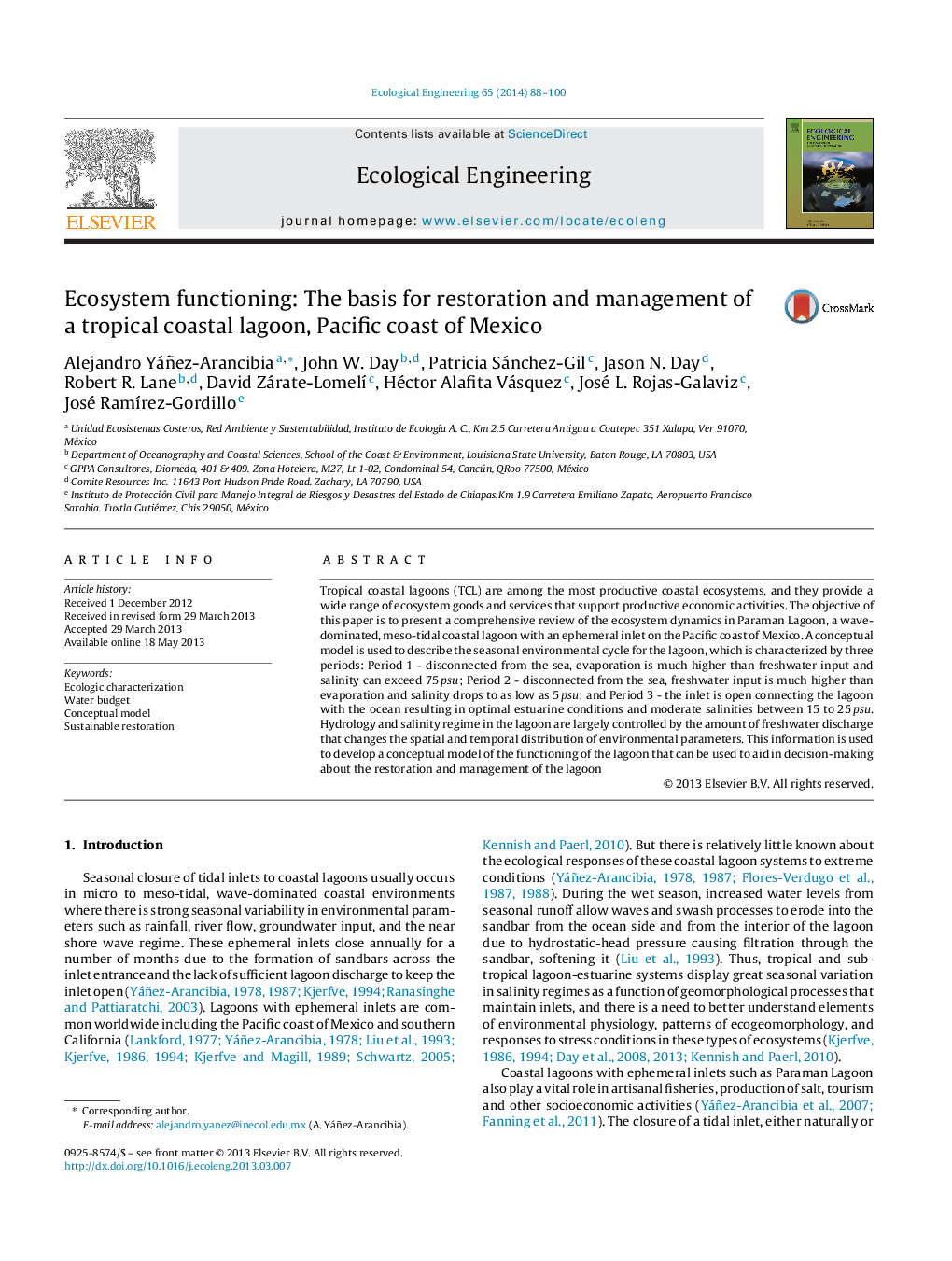| Article ID | Journal | Published Year | Pages | File Type |
|---|---|---|---|---|
| 4389448 | Ecological Engineering | 2014 | 13 Pages |
Tropical coastal lagoons (TCL) are among the most productive coastal ecosystems, and they provide a wide range of ecosystem goods and services that support productive economic activities. The objective of this paper is to present a comprehensive review of the ecosystem dynamics in Paraman Lagoon, a wave-dominated, meso-tidal coastal lagoon with an ephemeral inlet on the Pacific coast of Mexico. A conceptual model is used to describe the seasonal environmental cycle for the lagoon, which is characterized by three periods: Period 1 - disconnected from the sea, evaporation is much higher than freshwater input and salinity can exceed 75 psu; Period 2 - disconnected from the sea, freshwater input is much higher than evaporation and salinity drops to as low as 5 psu; and Period 3 - the inlet is open connecting the lagoon with the ocean resulting in optimal estuarine conditions and moderate salinities between 15 to 25 psu. Hydrology and salinity regime in the lagoon are largely controlled by the amount of freshwater discharge that changes the spatial and temporal distribution of environmental parameters. This information is used to develop a conceptual model of the functioning of the lagoon that can be used to aid in decision-making about the restoration and management of the lagoon
